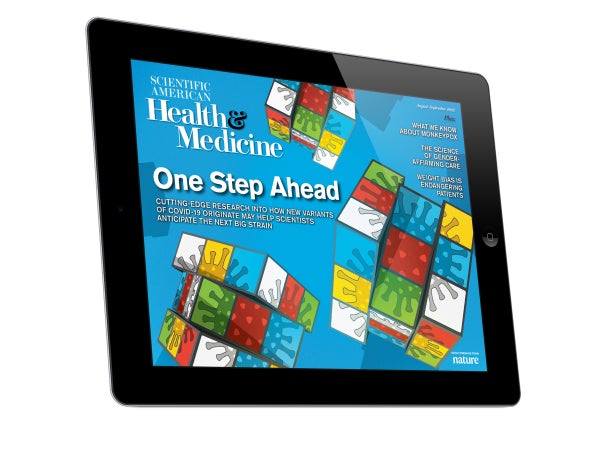On supporting science journalism
If you're enjoying this article, consider supporting our award-winning journalism by subscribing. By purchasing a subscription you are helping to ensure the future of impactful stories about the discoveries and ideas shaping our world today.
Another month, another variant. As of July, the version of SARS-CoV-2 called BA.5 is officially the dominant strain in the U.S., making up 54 percent of all new cases. This is unlikely to be the last variant, and each new strain, this one in particular, is highly contagious and has its own set of mutations that help it evade the immune system and existing antibodies from previous infections or vaccinations. Despite a constantly changing landscape, one thing that has remained steady since the beginning of this long pandemic is that science is ever vigilant. Researchers are studying past, present and long cases of COVID with unrelenting diligence, in hopes of perhaps predicting, if not preventing, the spread of the disease, as Ewen Callaway writes in this issue (see “Chronic Covid: The Evolving Story”).
Meanwhile new kinds of vaccines in development could revolutionize how we inoculate against the virus (see “Nose Spray Vaccines Could Quash COVID Virus Variants”), and engineers are at work implementing new ways to prevent indoor transmission (see “We Need to Improve Indoor Air Quality: Here’s How and Why”). Whether COVID sticks around for two more months or two more years, any solution we devise will be grounded, informed and inspired by science. And that, for me, is a cure for some uncertainty in the world.
